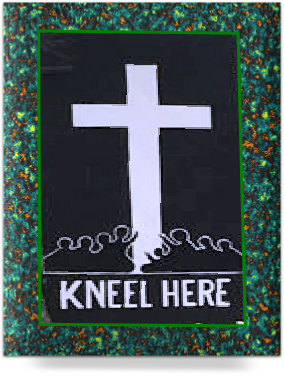GIANTS IN THE LAND

chainsbrokenatthecross.com
The mystery of The Wisconsin Giants Their heights ranged between 7.6ft and 10 feet and their skulls “presumably those of men, are much larger than the heads of any race which inhabit America to-
Was this some sort of prank, a hoax played by local farm boys or a demented taxidermist for fun and the attention of the press? The answer is no.
The Lake Delavan find of May 1912 was only one of the dozens and dozens of similar finds that were reported in local newspapers from 1851 forward to the present day. It was not even the first set of giant skeletons found in Wisconsin.
On 10 August 1891, the New York Times reported that scientists from the Smithsonian Institution had discovered several large “pyramidal monuments” on Lake Mills, near Madison, Wisconsin. “Madison was in ancient days the center of a teeming population numbering not less than 200,000,” the Times said. The excavators found an elaborate system of defensive works which they named Fort Aztalan.
“The celebrated mounds of Ohio and Indiana can bear no comparison, either in size, design or the skill displayed in their construction with these gigantic and mysterious monuments of the earth — erected we know not by whom, and for what purpose we can only conjecture,” said the Times.
On 20 December 1897, the Times followed up with a report on three large burial mounds that had been discovered in Maple Creek, Wisconsin. One had recently been opened.

“In it was found the skeleton of a man of gigantic size. The bones measured from head to foot over nine feet and were in a fair state of preservation. The skull was as large as a half bushel measure. Some finely tempered rods of copper and other relics were lying near the bones.”
Giant skulls and skeletons of a race of “Goliaths” have been found on a very regular basis throughout the Midwestern states for more than 100 years. Giants have been found in Minnesota, Iowa, Illinois, Ohio, Kentucky, and New York, and their burial sites are similar to the well-
The spectrum of Mound builder history spans a period of more than 5,000 years (from 3400 BCE to the 16th CE), a period greater than the history of Ancient Egypt and all of its dynasties.
There is a “prevailing scholarly consensus” that we have an adequate historical understanding of the peoples who lived in North America during this period. However, the long record of anomalous finds like those at Lake Delavan suggests otherwise.
The Great Smithsonian Cover-
Has there been a giant cover-
The skeletons of some Mound Builders are certainly on display. There is a wonderful exhibit, for example, at the Aztalan State Park where one may see the skeleton of a “Princess of Aztalan” in the museum.
But the skeletons placed on display are normal-
In the words of Vine Deloria, a Native American author, and professor of law:
“Modern day archaeology and anthropology have nearly sealed the door on our imaginations, broadly interpreting the North American past as devoid of anything unusual in the way of great cultures characterized by a people of unusual demeanor. The great interloper of ancient burial grounds, the nineteenth century Smithsonian Institution, created a one-
THIS ARTICLE IS COMPLEMENTS OF ARCHEOLOGY WORLD TEAM